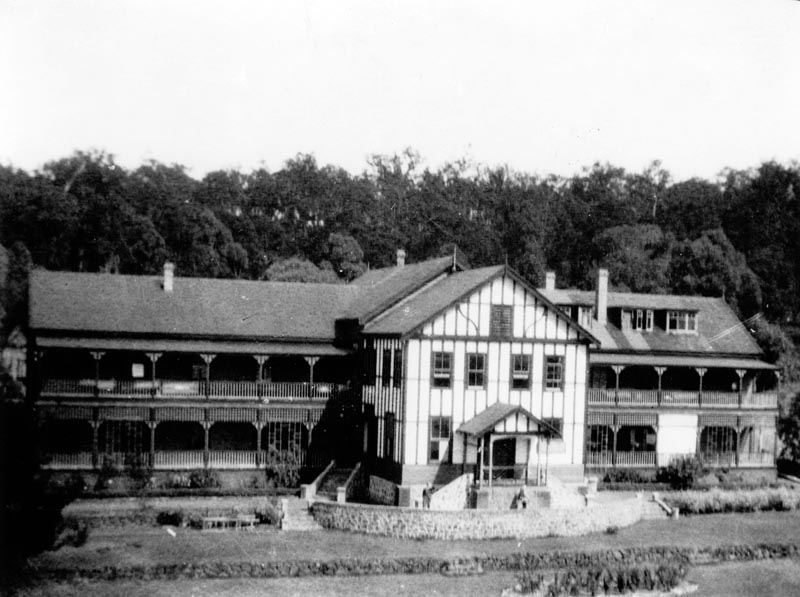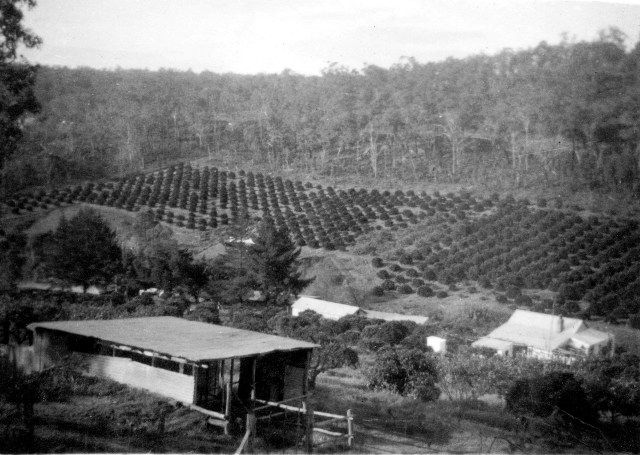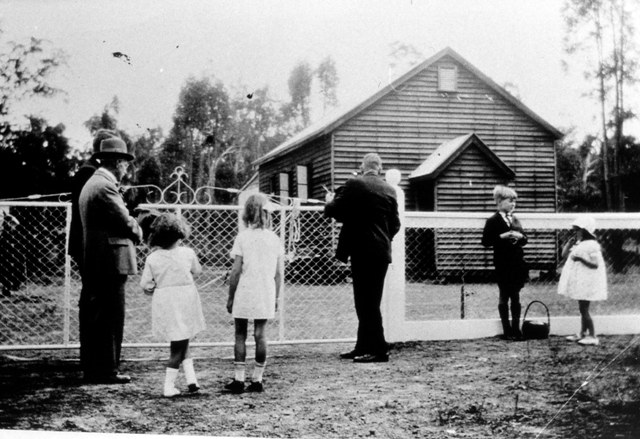CARMEL
Carmel is a part of the Eastern Rural Districts area of the Shire of Kalamunda with boundaries adjoining Canning Mills to the south, Pickering Brook to the east, Bickley and Walliston to the north and Lesmurdie to the west.
It does not really have a town centre as such. The main roads within Carmel are Carmel Road, Pomeroy Road, part of Canning Road, Glenisla Road, Welshpool Road East, Masonmill Road, Empire Road and Union Road. Carmel is undulating and hilly. Well-watered by parts of the Piesse Brook and the Bickley Brook, it is dominated by fruit orchards. More recently and somewhat controversially, vineyards are becoming more numerous. There was a clash between the two industries initially because of the impact of different spraying regimes.
The main landmarks within Carmel are Carmel Adventist College (secondary campus, but not the primary school campus which is in Bickley), Valencia Nursing Home, Melville's Rose Nursery as well as some prominent vineyards. The old Carmel School in Carmel Road, opened in 1904 but ceased to function as a school in 1979. The building is still used by the community. The Carmel Methodist Church, built next door to the school in 1915 at the instigation of Edward Owen, flourished for a while, but as transport improved, the proximity of the far bigger Kalamunda impacted and the church closed in 1936. Surprisingly, it was later removed and re-located to Lawnbrook Road Walliston, operated as a church again but has since been demolished.
History
Little is known of the aboriginal Beeloo people who roamed in the area, possibly for thousands of years. We do know that at the time of European settlement of the Swan River in 1829, their leader was a feisty young man called Munday, for whom Munday Brook in Karragullen and Munday Swamp in High Wycombe are named.
European settlement of the Carmel area commenced in the 1860s, lured to the area by the magnificent Swan River Mahogany trees (Jarrah). The Mason Bird Timber Station, led by Benjamin Mason and financed largely by his business partner Francis Bird, was established in the vicinity now known as Masonmill Road, with the huge logs being carted down the escarpment and across the sand-plain to the Canning River via a horse-drawn wooden tramway. From the landing near Woodloes, they were transported down the river to Fremantle for export to India and also England (in part to be used in the construction of the London Underground). However, the whole transport process was dangerous and inefficient, and by 1882 Mason had gone broke and the timber company was eventually sold on.
The far more efficient transport method, a loco-driven railway, was constructed in 1891 from Midland Junction, up a Zig Zag to Kalamunda and beyond, eventually as far as Karragullen. Now the timber industry could really advance with the Kalamunda and Carmel areas being linked to Midland and on to Perth and Fremantle. The siding at Carmel was then called Green's Landing after early settler Levi Green.
The change from Green's Landing to Carmel came in 1915 as the result of petitioning from the local community, led by their secretary, well-known school-teacher Thomas Millar. Several names were suggested including Kelvin, Carmel and Saxon. Carmel was chosen and made official in October 1915, Carmel being a Hebrew name appearing many times in the Bible, meaning vineyard or garden of God.
In the 1890s an active community of Seventh Day Adventist adherents led by the Palmateer and Ashcroft families, settled in the Bickley/Carmel region. By 1906, the construction of the school now known as the Carmel Adventist College, commenced. The pastor, H.R. Martin, was both architect and builder, and was assisted by the students who, as part of their enrolment, agreed to provide this substantial labour. The large, wooden, two-storey building complex which was finally completed in 1926, has since been replaced by a more extensive modern campus. The Adventists, for whom physical health and good diet is also strongly encouraged, also created the Sanitarium Factory processing healthy food products. This is still operating in nearby Bickley.
In 1918, a townsite along the railway line was also gazetted as the result of lobbying by the local community led by Tom Millar. By then a Soldier Settlement Scheme along Piesse Brook was being planned to settle the soldiers returning from the horrors of World War One. Millar realised the value of the land near the rail head and was keen to have it used wisely for all the community. Some of the street names like Union and Empire reflect the times. As more settlers came to this beautiful district, fruit-growing emerged as the major land use.
Carmel these days is a leisurely, quiet location. However, an extraordinary event occurred on the 6th March 2002, startling not just nearby residents but felt as far away as Kalamunda and Gooseberry hill. A fireworks factory, about which many locals had no real knowledge, exploded very spectacularly causing debris to be sent for great distances, spot fires to occur and damage in houses quite some distance away. An official enquiry was held but no foul play seemed evident. It was a major talking point for months!
For more information about Carmel and its surrounds, including photographs, see
SLEE and SHAW Cala munnda : A home in the forest.
McNAMARA, F.J. Kalamunda of the dreamtime.
Or visit the Kalamunda Library's Local History Room.
[Historical images for community profiles are contributed by The Kalamunda Historical Society]
Seventh Day Adventist College

Carmel School

Carmel apple orchards 1940

Methodist Church
